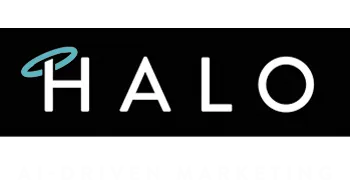Halo puts DTC companies on the
PATH TO PROFITS
Growth today requires financial clarity, marketing tethered to profit margins, and brand differentiation.
HALO delivers profit-driven, risk-mitigating, competitive differentiation.
Every project starts with a $4,999 financial model we complete in 10 days.
We make you money.

Liz Gonazalez | Dos Amigas
We could write an entire book about our journey with HALO. It’s the best thing that happened to our business.
Linda Balfour | Superfeet
With optimizing and recommendations done onsite for us, we have 3x’d our conversions for people that come to our site.
Joe Osborn | Avery Brewing
From creating a playbook for future digital campaigns, driving awareness for our top selling beers and increasing foot traffic in our tap room restaurant - they delivered on all of those.
Halo remedies the risks of...
Lack of financial clarity leading to misguided and misaligned marketing budgets
Acquiring customers in a black box of trial and error
Unmanaged burgeoning tech stack costs
Expensive on-premise teams throwing your profitably into a tailspin
OUR TARGET BUSINESS
Direct-to-Consumer eCommerce companies with a minimum of $500K in annual revenue.
WHY IT WORKS

Financial Clarity + Projections
Know where you're at, where you're going, and how you're going to get there.

Right-Sized Marketing Budgets
Allocate resources toward acquisition, purchase frequency, AOV, and loyalty.

Differentiation
Create and lead a category with a brand designed for customers to talk about and advocate for.
WHO'S BEHIND THE HALO OFFERING?

DUSTIN FINKEL
Finance + Distribution
BRANDS DUSTIN 's WORKED WITH
Goldman Sachs, General Mills, Awakened Foods: KaPop! + B.Fine Foods, WhiteWave Foods: Horizon Organic, Famous Brands: Mrs. Fields Cookies, Abbott: ZonePerfect

LARRY OLSON
Brand + Campaigns
BRANDS CHARLIE'S WORKED WITH
Apple, Google, K2, Adidas, Virgin, GOOD, Burt’s Bees, Jansport, Patagonia Provisions, Detroit Bikes, Jackson’s Honest, Pearl Izumi, The North Face, SONOS

DAVID WILLIAMS
eCommerce + Data + Media
BRANDS DAVE's WORKED WITH
Nestle (Coffee Mate), Kodak, Time Inc., The Wall Street Journal, Warner Brothers Motion Picture Group, InStyle, Canon USA, Life Magazine, People Magazine, Time Magazine, Sports Illustrated

JAMES CLARK
Category Design + Jobs To Be Done, Customer Targeting
BRANDS JAMES has WORKED WITH
Sanrio + Hello Kitty, Haribo, Stio, Travel Channel, Charlotte’s Web, Udi’s, EVOL, Glutino, Pearl Izumi, Sports Authority, Forever 21, Horizon Organic, Maple Hill, Mrs. Fields Cookies, Qdoba, TCBY, Alltel Sponsorships for the NFL and NASCAR, LEMS, Carafem, Augason Farms, Chugach Powder Guides, Where There Be Dragons

INTRODUCING ...

HALO Is A New CPG Strategy Collective Driven By Actionable Intelligence And Led By Experienced Industry Veterans. Our focus on the 4 Ps Of Profitably Scales Your Business.
WE HELP OUR CUSTOMERS
SOLVE VERY SPECIFIC PROBLEMS OF:
01
Category design: positioning and marketing differentiation
02
Full P&L Insights
03
Profitably acquiring customers
04
Clarity on how much to spend on marketing
05
Driving revenue and understanding payback periods
06
Managing complex techand marketing stacks
07
Clearly articulating and executing brand differentiation
08
Designing a brand to connect with customers
WHAT IS HALO?
THE HALO OFFERING
A NEW INTENT-LED DTC ECOM GROWTH OFFERING

DETAILED FINANCIAL CLARITY & ANALYSIS
Gross profit
Profit per business unit
Profit per product
Full P&Ls and cash strategies
Truth about how much to spend on marketing
Cash needs and cash cycle
Modeling what it takes to go from ‘Here’ to ‘There’

REVENUE DRIVERS
Reduce cost of acquisition
Increase purchase frequency
Increase AOV
Increase Word of Mouth
Target ONLY high-intent buyers
Simplify complex eCommerce tech stacks

CATEGORY DOMINANCE
Category Design because brands that play comparison games are in a race to commodity. Brands who play differently are able to design and dominate new categories and own the revenue
You're only as good as your team. DTC businesses are not going to scale to $10M plus trying to manage on-premise teams. It's too expensive in today's competitive markets.
Scaling requires predictable and repeatable profitable customer acquisition protocols.
testimonials
JOE OSBORNE
Sr. Marketing Manager | Avery Brewing
HENRY MUNTER
General Manager| Chugach Powder Guides
LINDA BALFOUR
VP of Marketing | Superfleet
CATEGORY EXPERTISE
FOOD AND BEVERAGE
plant-based food:
With the rise of vegan and vegetarian diets, plant-based foods are rapidly growing in popularity. This includes meat alternatives, dairy-free products, and other plant-based alternatives to traditional food products.
frozen:
DTC frozen food offerings bring restaurant-level flavors straight to customers' freezers. Eliminating last-minute meal planning—customers simply choose, heat, and feast!
snack foods:
Snack foods are always in demand, but there is a growing trend towards healthier, more nutritious snacks. This includes things like protein bars, fruit snacks, and other low-sugar, high-protein options.
pet food:
As pet owners become more conscious of their pet's health and nutrition, there is a growing demand for high-quality, natural pet food products.
ONLINE RETAIL
athleisure:
Athleisure is a fusion of athletic and leisurewear, and has become increasingly popular as more people prioritize comfort and wellness. This trend has led to the rise of sportswear and activewear brands that offer stylish and functional clothing.
sustainable and eco-friendly:
Consumers are becoming more environmentally conscious and are looking for products that are sustainable and eco-friendly. This includes everything from reusable bags and containers to household cleaning products and personal care items.
health and wellness:
As consumers become more health-conscious, there is a growing demand for products promoting health and wellness. This includes everything from natural and organic foods to supplements and beauty products.
beauty and cosmetics:
The fashion industry has expanded to include beauty and cosmetics, with beauty brands partnering with fashion labels and designers to create collaborations. The beauty industry has also experienced significant growth due to the rise of social media and influencer marketing.
THE HALO GUARANTEED PROMISE:
10 DAYS

Full financial model and projections
6 WEEKS

eCommerce Tech Stack Implementation
Design, Copy, And Implementation For Up To 17 Customer Engagement Flows Including A Welcome Series
8 WEEKS

Category Design Selection And Positioning
Jobs To Be Done Customer And Marketing Insights
Performance Dashboard
Establish Triggers For Halo Profitable Customer Acquisition Guarantee
High-Intent Retargeting Customer Database
12 WEEKS

Brand ID And Development (Using Existing Corporate ID Package)
Initial Campaign Design And Launch Strategy With Budgets
A Repeatable Customer Acquisition System
24 WEEKS

Established Profitable Customer Acquisition Pillars Of (1) Acquisition, (2) Frequency, And (3) Average Order Value
52 WEEKS

Opportunity To Move Your Contract To A Performance-Based Model
If we don't hit our timeline of guarantees, you stop paying us until we do.
What's It Cost?
Each engagement starts with a $4,999 commitment for a full financial model. The best money you'll ever spend.
In 10 days we deliver:
• A full financial model and projections
• Analysis of strategic focus
• Initial assessment of marketing budgets
...based on the initial financial analysis, we move quickly to right-size your marketing and brand spends, agreeing on a budget for the next phases:
In six weeks we deliver:
• E-commerce growth stack optimization
• Design, copy and implementation for up to 17 customer engagement flows including a welcome series
• Performance dashboard set up
• Establish triggers for Tool Room Profitable Customer Acquisition Guarantee.
In eight weeks we deliver:
• Category Design selection and positioning
• Jobs To Be Done customer and marketing insights
• Performance dashboard tracking key eCommerce metrics
• High-intent retargeting database
Yes, we can break down the price by tactics. Contact us to learn more. Tactics include:
• Financial analysis
• E-commerce tech stack set up and maintenance
• AI-enabled data and reporting
• Category design + Jobs To Be Done customer interviews
• High-intent retargeting database
• Ad strategy and management
• Brand ID and development
• Campaign or launch strategy
The question really is what’s the cost of not doing this?
What Are The HALO Profitable Customer Acquisition Guarantee Triggers?
There are a number of triggers. Because this is business and requires everyone’s attention stipulations for the guarantee have both client and HALO-side triggers:
HALO delivers the initial financial analysis within 10 business days of signing
HALO delivers a path to profitability financial projections model in six weeks
HALO implements and maintains eCommerce growth stack with six weeks
HALO creates design, copy, and implements up To 17 customer engagement flows Including a welcome series
HALO delivers a differentiated category position for the company in eight weeks
HALO provides a go to market strategy with budget allocations in eight weeks
HALO builds out a brand or product campaign strategy in 12 weeks
HALO establishes a profitable customer acquisition encompassing increase in key revenue levers of: acquisition, purchase frequency, and AOV in 24 weeks
Client and HALO establishes and maintains gross profits above 60% for DTC activities
Client delivers and maintains factual and complete financials within 10 business days. Note: Delays will push the guarantee deadlines back accordingly.
Client executive leadership defines, documents and promotes the category positioning
Client provides access to site, customer and platform data for performance dashboard
Client approves the proposed minimum advertising budget presented in the go-to-market strategy
Client has an established and functional customer service program
Client pays for and executes Net Promoter Score insights and achieves a score above 50
Client is operating on Shopify Plus
Client is subscribed to Halo recommended tech stack which includes, but is not limited to: Klaviyo, Conversific, Rewind Staging and Back Ups, Segments and Hyperspeed
Client launches and supports a paid and organic repeatable customer acquisition campaign
Client establishes offshore in-house team within 48 weeks
Client establishes monthly gross profit reinvestment into marketing strategy in 48 weeks
If Client is showing positive EBITA, HALO and Client can choose to move your contract to a performance-based or equity model after 52 weeks
Note: we define a week as 5 consecutive business days, excluding weekends.
How Do I Improve Customer Acquisition Costs?
Improving Customer Acquisition Cost (CAC) starts with understanding your gross margins per product, establishing a known payback period, then optimizing your marketing strategies to target high intent buyers for acquisition. Data-driven insights highlight areas for refinement, from budgets to conversion funnels.
What Is Coherence Marketing?
Coherence Marketing is an integrated approach that focuses on the entire customer lifecycle using data-driven strategies and incorporating marketing strategies like Jobs To Be Done Theory and Category Design. It goes beyond traditional marketing to drive sustainable growth and customer engagement.
What Is Category Design?
Category Design is a discipline to help businesses create new markets, gain a competitive advantage, experience faster growth, create loyal customers, and generate outsized profits.
It is about creating a unique company, an unrivaled product, and an entirely new market space at the same time.
The journey of category design starts with understanding the problem you desire to solve. The problem is the proxy for the category and is the strategic element you see missing in the world. That unsolved problem is what keeps you up at night and drives you to build a product, company, and category to solve it.
The most exciting companies create and give us new ways of living, thinking, and doing business. They solve problems we didn’t know we had or didn’t pay attention to because we never thought there was another, perhaps better way. Category design is a byproduct of digital transformation, and mobilization is a crucial step in category design. To mobilize your workforce, you must foster a strong company culture that thrives upon disruptive innovation and technology.
What Are The Benefits of Category Design?
Category Design brings significant benefits to businesses that successfully implement it. Here are some of the advantages of Category Design:
1. Creating new markets: Have a unique POV on the problem the company is solving for the customer.. By doing so, businesses can create a unique company, product, and category, which can lead to exponential growth and value creation.
2. Competitive advantage: Category Design helps businesses define the terms of competition in their favor. It changes the way a company thinks about what it's trying to do and how it plans to get there. Every department will be affected by the effort, making it a whole-company effort.
3. Faster growth and higher valuations: Companies that create new categories or successfully redesign existing categories experience much faster growth and receive much higher valuations from investors than companies bringing only incremental innovations to market.
4. Loyal customers and brand ambassadors: By offering people a new way of doing things, businesses can solve problems that customers didn't know they had, creating loyal product believers and brand ambassadors.
5. Outsized profits: Research published in Harvard Business Review supports that if executed correctly, category design can deliver outsized profits.
What Is Jobs To Be Done Theory?
Jobs To Be Done (JTBD) is a framework that helps you understand your customer's needs by focusing on the "job" they are hiring your product or service to do. By using a JTBD approach, businesses align their brand, messaging, and even product offerings align with the progress their core customer is trying to make.
One of the key advantages of the Jobs to Be Done Theory is that it enables your business to identify pain points and frustrations your customers may experience but not explicitly express.
For instance, Joan is trying to lose weight. She works a demanding job and frequently stops for takeout on the way home because she doesn’t have time to cook. She wants to "hire" a company that offers easy-to-grab on-the-go meals and is a healthier option than takeout.
Flourish is a B2C prepared meal company that delivers healthy, pre-made meals on a subscription basis. Using the Jobs to Be Done Theory, they learn that most of their customers are busy professionals like Joan.
Flourish decides to change their product offering from a paleo meal subscription for athletes to a high protein and fiber meal subscription service for busy professionals trying to lose weight or stay healthy.
By understanding what “job” their customer really needs to be done and what their real rival is (takeout), they create a new landing page with this value proposition, which soon nets a 30% conversion rate.
Once the customer needs are identified, we find ways to address them and not only create products or services that better meet your customers' requirements, but also create content and campaigns leading to higher customer satisfaction, increased loyalty, and even higher revenues.
Using Jobs to Be Done Theory to Develop Customer Personas
By understanding the jobs different types of customers are trying to do, your business can create more accurate and effective customer personas based on customers' motivations and needs, rather than simply demographic information.
For example, let's say you're developing a customer persona for the busy professional who stops by your coffee shop on the way to work. Rather than simply listing their age and income level, focus on their need for a quick and convenient caffeine fix and their preference for a no-fuss ordering process.
On the other hand, if you're developing a persona for the group of friends who come to your coffee shop on weekends, you might focus on their desire for a cozy and comfortable atmosphere and their need for a variety of menu options to accommodate different tastes and dietary restrictions.
How Do You Define Gross Profit?
In the context of a direct-to-consumer (DTC) e-commerce company, gross profit is a critical metric as it gives insight into the core profitability of the business, excluding many of the operational, administrative, and other indirect costs. Here's how gross profit can be defined and calculated for such a company:
Definition of Gross Profit:
Gross profit is the difference between the revenue generated from goods sold and the cost of goods sold (COGS). COGS includes direct costs attributable to the production or procurement of the goods sold by the company.
Formula:
Gross Profit = Total Revenue - COGS
Where:
Total Revenue: This is the total sales generated from selling products. For a DTC e-commerce company, this would include all sales from the website, minus returns, allowances, and any discounts provided.
COGS (Cost of Goods Sold): These are the direct costs attributable to the production of the goods sold by a company. In the context of a DTC e-commerce company, COGS might include:
• Cost of manufacturing or purchasing the product.
• Packing materials.
• Direct labor costs associated with packing and shipping the product.
• Shipping costs (if borne by the business and not passed directly to the consumer).
• Payment gateway fees or commissions directly associated with the sale (some might argue to keep this separate, but it's a consideration)
• Quality Inspection and Testing: If products undergo any kind of quality assurance, testing, or inspection before being listed for sale, those costs would factor in.
• Warehousing and Storage: Costs directly related to storing the products until they're sold. This can include rent for the storage space, utilities, and any specialized storage conditions (e.g., refrigeration for perishable items).• Packaging Design: The cost of designing specialized packaging. This is beyond just the basic packaging material costs.
• Labor Associated with Inventory Management: This can include receiving, sorting, labeling, and shelving goods.
• Wastage or Shrinkage: Costs associated with damaged goods, lost items, or products that become obsolete before they can be sold.
• Licensing or Royalty Fees: If the products sold are under a license or if there's a royalty fee associated with using certain intellectual properties, then these fees would be included.
• Customs and Duties: For imported goods, the costs related to customs, tariffs, and duties to bring products into the country.
• Product Photography and Listing Costs: For e-commerce, presenting the product online requires high-quality images, videos, or other visual presentations. The costs involved in creating these presentations would be part of the direct costs.
• Assembly or Final Preparation: Some products require assembly or some form of finishing touches before they're ready for sale.
• Sample Costs: If samples of products are produced and distributed (either for quality checking or for marketing purposes) before the final product is produced and sold.
• Costs of Raw Materials: If products are manufactured in-house, then the costs of all raw materials and components used in the product's production.
• Equipment Depreciation: If specialized equipment is used only for producing specific products, a proportionate amount of its depreciation can be allocated to the COGS.
• Product-specific software or tech costs: If there are specific software solutions or technologies (like RFID tags) used exclusively for some products.
It's essential to keep in mind that the direct costs can vary significantly based on the nature of the product, the business model, and the company's operations. The key is to identify and account for all costs directly tied to making the product available for sale to the customer.
It's worth noting that while gross profit gives insight into the core product-related profitability, it does not account for other operational expenses like marketing, salaries (unrelated to production or direct sale), rent, utilities, etc. Net profit will consider all these other expenses and provide a more holistic view of the overall profitability of the business.
For accurate and insightful financial analysis, it's crucial to consistently define and calculate gross profit, ensuring that you're comparing apples to apples when evaluating the performance over time or against competitors.
What Metrics Are In The Performance Dashboard?
In eight weeks we track high priority metrics in the following areas:
Acquisition:
- Marketing costs
- Advertising to Sales Ratio (ASR)
- Return on Ad Spend (ROAS)
- Return on Marketing Investments (ROMI)
- Customer Acquisition Costs (CAC)
Activation:
- Add-to-Cart Rate
- Conversion Rate from Visit to Order
- Cost per Order (CPO)
- Website Speed
Revenue:
- Gross Sales
- Net Profit
- Margin Rate
- Average Order Value (AOV)
Retention:
- Click Rate
- Average Revenue Per Customer (AAPC)
- Customer Churn Rate (CCR)
- Revenue Churn Rate (RCR)
- Customer Lifetime Value (CLV)j
Referral:
- Net Promoter Score* (if running NPS system)
FREQUENTLY ASKED QUESTIONS
Profitable Customer Acquisition
Our experience establishing key strategic advantage frameworks, backed by repeatable SOPs, and commitment to building scalable, A+ in-house teams makes HALO a unique alternative for direct-to-consumer CPG companies looking to scale.
